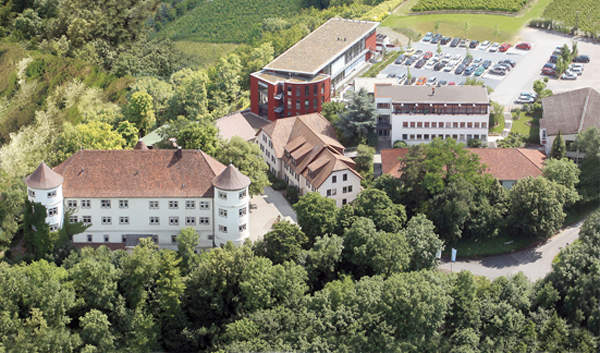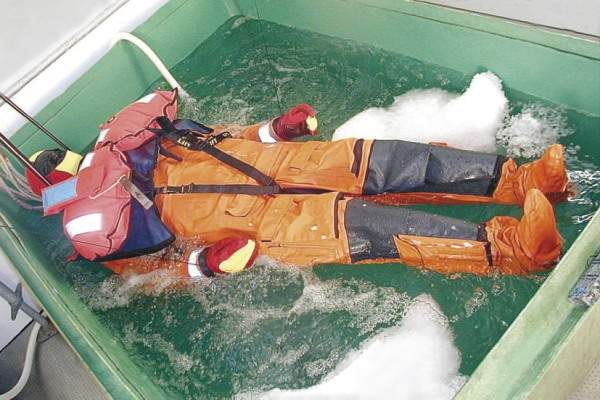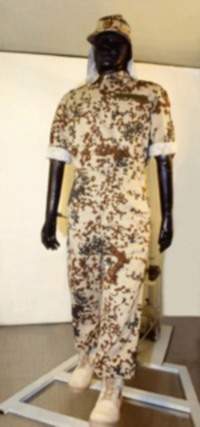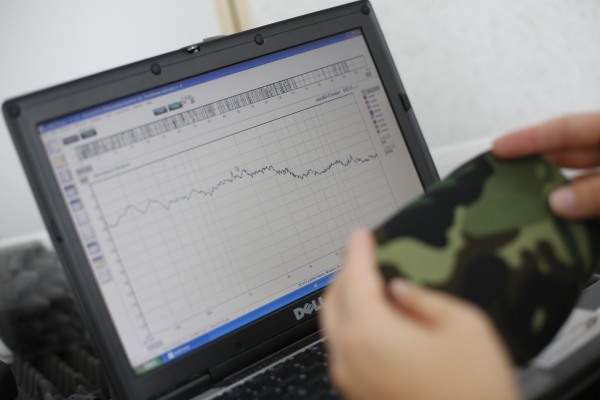As one of the world’s leading independent, accredited textile research and testing laboratories, Hohenstein offers a comprehensive range of testing, application-based research and development, consultancy and inspection for high technology and functional military textile articles and associated areas.
For more than 25 years Hohenstein has been officially recognised as an accredited testing/certification centre for Personal Protective Equipment – Notified Body 0555.
A team of 700 highly qualified and committed employees worldwide work in the best-equipped, state-of-the-art laboratories to provide our clients with reliable results and solutions. Test designs can be fully customised to explore the most diverse and specific challenges.
Military textile materials testing for performance and protection
A soldier’s survivability, mobility and stamina is closely linked with the wear, comfort and fit of their clothing. Our extensive experience, gained in many years of applied research into clothing physiology, smart textiles, ergonomic fit and other associated areas, as well as our interdisciplinary approach, helps our clients to stay one step ahead with cutting-edge clothing systems.
We provide materials testing, consulting and certification for textile safety, wear comfort, textile resistance, fit and design, textile UV protection, IR-measurements, acoustic measurements, flame-retardant finishing, industrial reprocessing of textile and many other technical features. Our range of services includes:
- Product development and optimisation
- Requirements analysis and elaboration of technical specifications (MIL-Specs etc.)
- Elaboration of specifications (fit, design, size, workmanship, thermophysiological and hygiene properties, in addition to the durability of clothing systems)
- Consulting on the selection and development of clothing systems
- Tests for compliance with technical specifications / quality assurance
Cost-efficient military immersion suits testing to ISO 15027
Hohenstein is one of the few institutes worldwide that are in a position to test the thermal insulation and survival time in immersion suits with a thermal manikin according to ISO 15027 without the need for expensive real-life testing.
Thermo-physiological properties of seats in military vehicles
Troops shall not only arrive safely, but also arrive in the best condition! Seats often contain layers, which are easy to care, but are not able to absorb and transport humidity and heat away from the surface layer.
This causes heat and moisture accumulation, resulting in uncomfortable seat climate. It is scientifically proven that these issues lead to increased fatigue of drivers and thus risk of accidents.
To test and further develop different seating materials, the latest family member of sweating thermal manikins at Hohenstein named ‘Sherlock’ can also sit down; this means that in future it will be possible to test seating of all kinds, including office chairs, car seats and aircraft seats. Unlike the other thermal manikins on duty in Hohenstein Sherlock is able to "sweat". In the future, it will be possible to measure both thermal insulation and breathability of clothing, using one measuring system.
Another Hohenstein developed measuring device, the „sweating bottom" allows dynamic measurements, as it simulates driving movements and provides statements on moisture transport, water vapour resistance and buffering capacity of water vapour/vaporous sweat.
Thermo-physiological properties & thermal insulation of textile materials and ready-made goods
The body reacts to temperature changes with changes in energy use, leading to reduced performance of soldiers. Optimal clothing supports the soldier in maintaining the core body temperature and keeping saved energy ready for encountered challenges.
To determine the thermo-physiological quality of textile materials, the Hohenstein skin model simulates the way the skin emits heat and moisture. The measurements supply precise data on thermal insulation and moisture transport resistance, perspiration transport, sweat buffering, and drying time, to name a few.
The thermal insulation of made-up goods, such as combat uniforms, immersion suits, cold protective clothing and sleeping bags can be measured with the help of the Hohenstein-developed thermal manikins, which can be electrically heated to characteristic temperature gradients at man’s body surface.Hohenstein can recreate the most varied of environments in its climate chambers for realistic testing.
About The Hohenstein Institute and customer service
Clothing systems, which are not functional and comfortable for their mission, can be irritating at best, but deadly at worst. We have worked closely and confidentially with public authorities worldwide on various projects to deliver the most advanced solutions.
Talk to us. We will be pleased to work out an individual solution to your specific problem.








